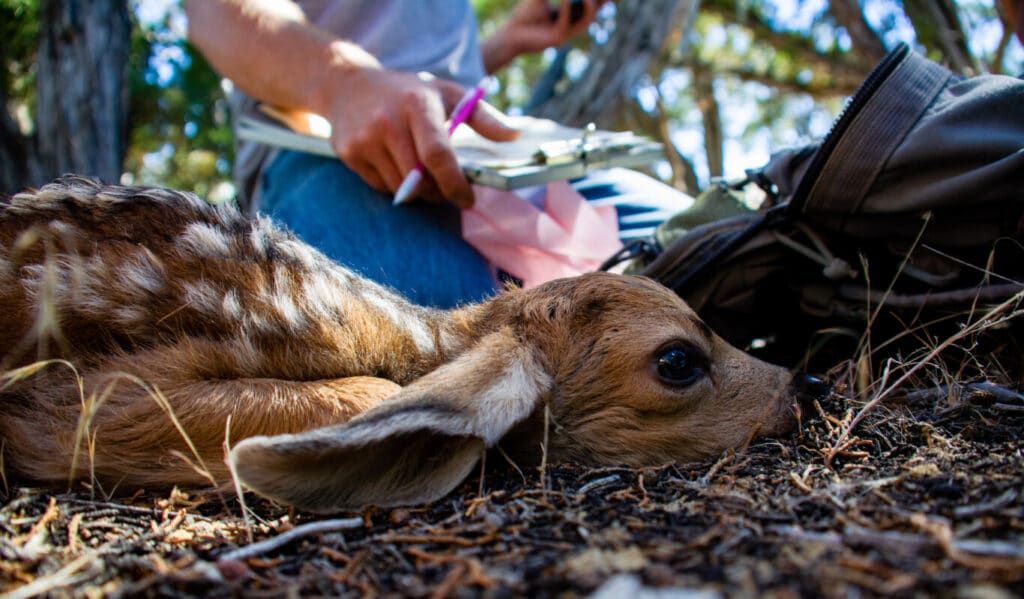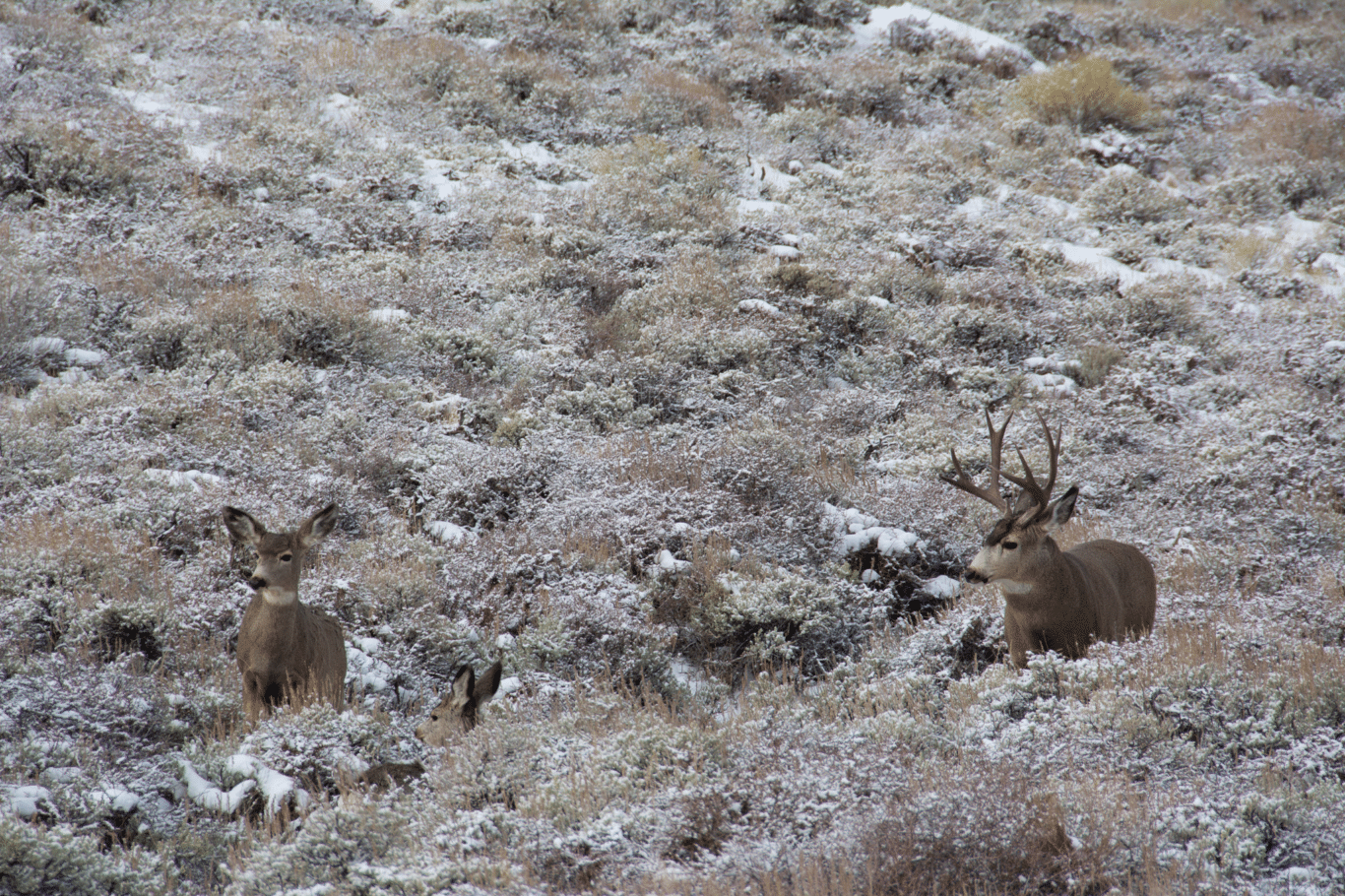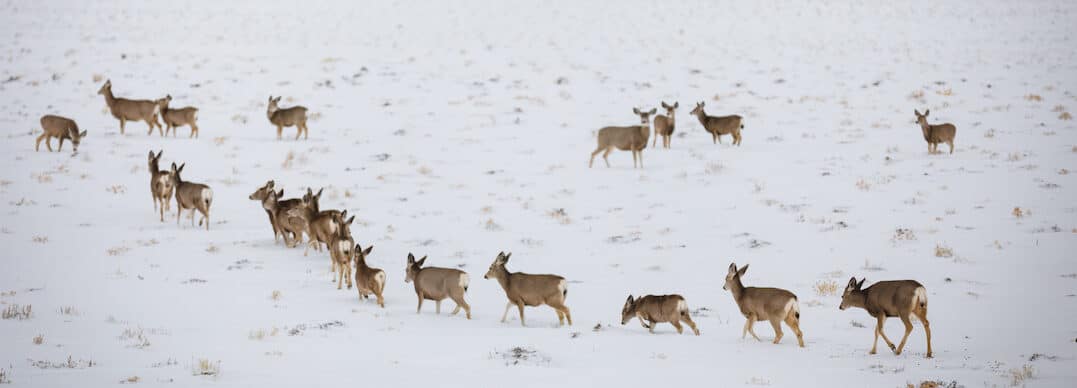While conservation is a serious matter, WWF has taken a light-hearted approach with this tongue-in-cheek reference to the 1978 Queen song that mule deer researchers at the Monteith Shop have popularized in the past few years. "Fat Bottom Does" drives home the importance of supporting large-landscape habitat conservation for wildlife in this great state.
Good habitat is key to pampering the number one driver of mule deer herds, as well as all large ungulate populations - the mommas. That means a commitment to enhancing habitat is key to conserving and improving wildlife populations as they rebound from tough winters like the one experienced across the West in 2022-2023.
What's The Research Say?
Though wildlife research is centuries old, following the mule deer boom of the 1960s, researchers have looked into ways to help mule deer herds climb back to the higher population levels observed in the middle of the 20th century. Most recently, the Wyoming Migration Initiative and Monteith Shop have focused on the factors impacting the Cowboy State's mule deer herds through a variety of studies.

Photo | Jess Johnson
In 2022, the Monteith Shop in the Haub School Haub School of the Environment and Natural Resources at the University of Wyoming published a study titled, "Maternal effects and the legacy of extreme environmental events for wild mammals." Read the study here. In lay terms, this study shows how mothers' nutrition while carrying the fawns to term impacts the body condition of those fawns.
In the study, a buck born after the harsh 2016-2017 winter was stunted in growth compared to more normal years. Dr. Kevin Monteith, professor of Natural Resource Science and leader of the Monteith Shop, was quoted in a 2023 article as saying, “Obviously the year he was born was a really bad survival year for fawns, but those that did were most likely going to carry the scar of those conditions as experienced by mom their entire life.”

Herein lies the essence of "Fat Bottom Does." The data shown by researchers clearly shows that the more body fat animals have going into winter, the higher likelihood they have of surviving, as well as reproducing and for those animals to be healthy. If there is less body fat, then deer will have a harder time surviving comparatively less harsh winters.
Fat moms also are more likely to carry healthy fawns to term, as well as possibly carry twins to term. Additionally, those fawns will be larger and more adapted to surviving the following winter.
What About The Bucks?
To further drive home the importance of does in our populations, standard mule deer management research states that less than 10% of the population needs to be bucks in order for all of the does to be bred each November.
That means as long as buck ratios within a herd are in acceptable levels per 100 does, the bucks are largely surplus to the population.
The bucks can, however, reflect the health of their mothers in their racks, as well as the health of the landscape. Research from the Monteith Shop shows as habitat decreases, and as quality forage is tougher to find for does and bucks alike, there will be a decrease in antler size. Fat and happy mommas equal bigger racks on bucks.

What Can You Do To Help Mule Deer (and all wildlife) Thrive?
Long-term solutions have been Wyoming Wildlife Federation’s ethos since 1937. If we want to provide the best chance possible for mule deer, as well as all other species we care about, to thrive into the future, we first have to take care of their groceries, as well as their access to them for the long run.
The BLM Rock Springs Field Office is currently revising its Rock Springs Resource Management Plan. This plan for 3.6M acres of public land has implications for wildlife and the sporting community for many years to come. It includes management actions on crucial winter range habitat for the Red Desert to Hoback Migration, as well as prescriptions for stopover habitat in the migration corridor.
The Bridger-Teton National Forest is also beginning their plan revision process. The BTNF encompasses 3.4 million acres of public land and provides some of the nation’s best hunting, fishing, and wildlife viewing opportunities. As part of the Greater Yellowstone Ecosystem, it is some of the wildest intact backcountry in the lower 48 states. Its habitats are important summer ranges for mule deer, and many others of our favorite species.
Furthermore, work is ongoing to conserve migration corridors with private landowners and state-owned lands. The migration routes of ungulates across Wyoming are part of this state's identity. That's why WWF works hard to reduce barriers with efforts like wildlife-friendly fence conversions.
By being a thoughtful voice at the table, and experts in the arena of public lands policy, the Federation represents and supports members like you at public meetings, during commenting periods, and through collaboration with all stakeholders involved in the conservation of Wyoming's wildlife and wild places.

